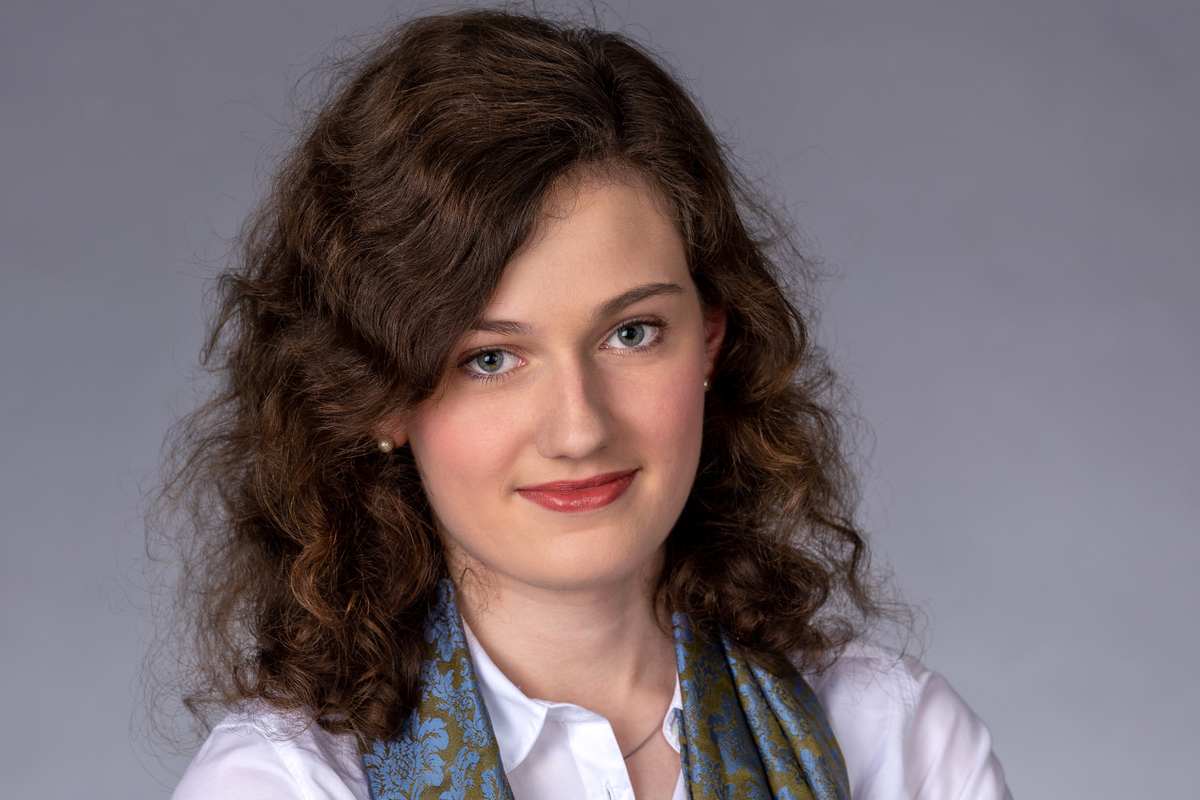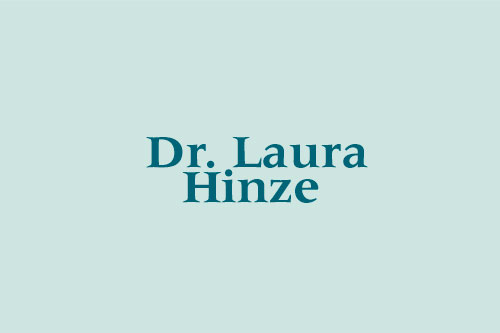Prize Winner of the Paul Ehrlich and Ludwig Darmstaedter Early Career Award 2022


Pincer movement breaks resistance
Acute lymphatic leukaemia is the most common type of cancer in children. While in the past it usually led to death within a few weeks, today it can be cured in the majority of cases. However, this is not true if the leukaemia cells become resistant to treatment. Laura Hinze has discovered how resistance to the chemotherapeutic agent asparaginase can be overcome. The insights she has gained into intracellular signalling cascades are fundamental. They also open up new perspectives for the treatment of widespread solid tumours such as colon cancer.
The enzyme asparaginase catalyses the breakdown of asparagine. Unlike normal body cells, leukaemia cells can produce this amino acid only to a limited extent because they express insufficient amounts of the enzyme asparagine synthetase (ASNS). They depend on importing asparagine from the bloodstream. The injection of asparaginase depletes asparagine. This kills leukaemia cells, while it does not harm normal body cells. However, leukaemia cells can probably learn to increase the expression of ASNS in order to escape treatment with asparaginase. This once prompted attempts to overcome their resistance by administering ASNS inhibitors. However, this was accompanied by severe side effects. The goal of Laura Hinze and her research group was to discover other molecular resistance mechanisms of asparaginase that could be better targeted therapeutically.
Tracing the entire genome
For this purpose, they undertook a genome wide CRISPR/Cas9 screen in a culture of resistant leukaemia cells. They equipped these cells with the ability to express the bacterial gene scissors Cas9. Packaged in viral ferries, they then introduced 123,411 different mRNA molecules into the cells. Like address labels, these guide RNAs instructed the gene scissors which sites of the cancer cell DNA they should target. There, each pair of scissors made its specific cut. In this way, Hinze and her team switched off 19,050 genes of the leukaemia cells. They had set the coordinates of their experiment in advance so that only one viral vector would enter each cell. In this way, they ensured that all genes were switched off in the entire cell culture, but only one in each individual cell.
They then observed what happened when they treated the cells with a medium dose of asparaginase. A culture to which only a buffer solution without an active ingredient was added served as a control. As expected, the cells that died most frequently under asparaginase treatment were those in which ASNS was absent. They had apparently lost their resistance most severely. However, cells in which one of the two genes NKD2 and LGR6 had been switched off also died particularly frequently. Conversely, this indicated that leukaemia cells in which these genes function become resistant particularly frequently. Targeted silencing of these two genes by RNA interference confirmed this finding. In further steps, Hinze proved that both genes code for inhibitors of the Wnt signalling pathway.
Control of a transcription factor
The first Wnt signalling molecules were discovered in the 1980s in oncological and embryological research . They primarily serve the communication between neighbouring cells. They model form and function of cell assemblies and accordingly control embryonic development. Later, they are primarily responsible for repair and maintenance work in tissue. In humans, 19 different Wnt messengers are known today, which transmit their signals via specific membrane receptors into the cell interior. In the most important Wnt signalling pathway, such signals prevent the degradation of the protein ß-catenin in the cytoplasm. It accumulates, migrates into the cell nucleus and, as a potent transcription factor, stimulates the expression of growth factors there. The untimely activation of the Wnt signalling pathway therefore favours the development of cancer. It can be caused by mutations of molecules of the signalling pathway.
The everyday task of ß-catenin is to mechanically contribute to the adhesion of neighbouring cells. Excess amounts of the molecule are promptly disposed of in the cytosol when the Wnt signalling pathway is inactive. For this purpose, ß-catenin is first brought into a molecular workshop consisting of two scaffold proteins and two kinases. Only when both kinases have phosphorylated it in turn can ß-catenin be tagged with ubiquitin labels that mark it for degradation. The main role in this molecular workshop is played by the enzyme glycogen synthase kinase 3 (GSK3).
Originally discovered as a regulator of glycogen synthesis, GSK3 is now considered the most versatile of all enzymes. It deals with more than 100 different substrates in its biocatalytic work and seems to appear with a different order in almost all cellular signalling pathways. Pathophysiological, GSK3 was first associated with diseases of the central nervous system, be it with the phosphorylation of the tau protein in Alzheimer's disease or with bipolar disorder. The classical mood stabilizer Lithium is a GSK3 inhibitor. GSK3 has also been described as a promoter of inflammatory diseases. It can act as a tumour suppressor in some cancers and promote tumour growth in others. GSK3 occurs in two isoforms, alpha and beta.
Cutting off the supply route
In acute lymphatic leukaemia, GSK3 presumably initiates resistance to treatment with asparaginase. Only after GSK3 has prepared the ubiquitination of ß-catenin, the latter is fed to the proteasome, where it is broken down into small fragments and amino acids like all proteins that could harm the cell or that it does not need. From this source, the leukaemia cell fetches the asparagine that it has been deprived of by treatment with asparaginase. Through a partial activation of the Wnt signalling pathway, which blocks the GSK-dependent degradation of ß-catenin without spurring its potentially oncogenic signals, Hinze succeeded in largely drying up this source of resistance. Confusingly, the signal for this form of activation is called Wnt/STOP because it leads to a Stabilisation Of Proteins (STOP).
The effect of this Wnt/STOP signal can also be achieved by inhibiting GSK3α, but not by inhibiting GSK3ß, as Hinze and colleagues were able to impressively demonstrate in cell cultures and confirm in animal experiments. Leukaemia mice that received asparaginase and GSK3α inhibitors at the same time survived much longer than those treated with asparaginase alone. "Hinze and colleagues were able to show for the first time that therapy-refractory leukaemia cells require GSK3α-dependent protein catabolism as an alternative source of amino acids in order to survive asparagine depletion", the Scientific Council wrote in its tribute to the awardee. "Pharmacological inhibition of GSK3α leads to an inhibition of this alternative signalling pathway and thus to asparaginase sensitization, which is a promising therapeutic strategy." In other words, neither the inhibition of GSK3α nor the administration of asparaginase alone is sufficient to permanently defeat the leukaemia cells; rather, it is only from the two measures together that the effect of a synthetic lethality arises - comparable to a pincer movement via both flanks.
Blueprint for certain solid tumours
Mutations in the Wnt signalling pathway that led to its overactivation are particularly typical of colorectal cancer. Hinze therefore examined to what extent her research results could be transferred to this second most common of all cancers. Her initial hypothesis: About 15 percent of all Wnt pathway mutations in colorectal cancer are upstream of the enzyme GSK3. The enzyme is thus endogenously inhibited in patients with this genetic signature. The proteasome no longer supplies asparagine. If one additionally deprived the asparagine by administering asparaginase, one could starve the colon cancer cells in this group of patients. Laura Hinze and her team have provided preclinical proof of this hypothesis - and thus established a surprising commonality between leukaemia and colorectal cancer. Clinically, this finding could soon be tested. It may also apply to other solid tumours characterized by Wnt-induced endogenous inhibition of GSK3.
The enzyme asparaginase catalyses the breakdown of asparagine. Unlike normal body cells, leukaemia cells can produce this amino acid only to a limited extent because they express insufficient amounts of the enzyme asparagine synthetase (ASNS). They depend on importing asparagine from the bloodstream. The injection of asparaginase depletes asparagine. This kills leukaemia cells, while it does not harm normal body cells. However, leukaemia cells can probably learn to increase the expression of ASNS in order to escape treatment with asparaginase. This once prompted attempts to overcome their resistance by administering ASNS inhibitors. However, this was accompanied by severe side effects. The goal of Laura Hinze and her research group was to discover other molecular resistance mechanisms of asparaginase that could be better targeted therapeutically.
Tracing the entire genome
For this purpose, they undertook a genome wide CRISPR/Cas9 screen in a culture of resistant leukaemia cells. They equipped these cells with the ability to express the bacterial gene scissors Cas9. Packaged in viral ferries, they then introduced 123,411 different mRNA molecules into the cells. Like address labels, these guide RNAs instructed the gene scissors which sites of the cancer cell DNA they should target. There, each pair of scissors made its specific cut. In this way, Hinze and her team switched off 19,050 genes of the leukaemia cells. They had set the coordinates of their experiment in advance so that only one viral vector would enter each cell. In this way, they ensured that all genes were switched off in the entire cell culture, but only one in each individual cell.
They then observed what happened when they treated the cells with a medium dose of asparaginase. A culture to which only a buffer solution without an active ingredient was added served as a control. As expected, the cells that died most frequently under asparaginase treatment were those in which ASNS was absent. They had apparently lost their resistance most severely. However, cells in which one of the two genes NKD2 and LGR6 had been switched off also died particularly frequently. Conversely, this indicated that leukaemia cells in which these genes function become resistant particularly frequently. Targeted silencing of these two genes by RNA interference confirmed this finding. In further steps, Hinze proved that both genes code for inhibitors of the Wnt signalling pathway.
Control of a transcription factor
The first Wnt signalling molecules were discovered in the 1980s in oncological and embryological research . They primarily serve the communication between neighbouring cells. They model form and function of cell assemblies and accordingly control embryonic development. Later, they are primarily responsible for repair and maintenance work in tissue. In humans, 19 different Wnt messengers are known today, which transmit their signals via specific membrane receptors into the cell interior. In the most important Wnt signalling pathway, such signals prevent the degradation of the protein ß-catenin in the cytoplasm. It accumulates, migrates into the cell nucleus and, as a potent transcription factor, stimulates the expression of growth factors there. The untimely activation of the Wnt signalling pathway therefore favours the development of cancer. It can be caused by mutations of molecules of the signalling pathway.
The everyday task of ß-catenin is to mechanically contribute to the adhesion of neighbouring cells. Excess amounts of the molecule are promptly disposed of in the cytosol when the Wnt signalling pathway is inactive. For this purpose, ß-catenin is first brought into a molecular workshop consisting of two scaffold proteins and two kinases. Only when both kinases have phosphorylated it in turn can ß-catenin be tagged with ubiquitin labels that mark it for degradation. The main role in this molecular workshop is played by the enzyme glycogen synthase kinase 3 (GSK3).
Originally discovered as a regulator of glycogen synthesis, GSK3 is now considered the most versatile of all enzymes. It deals with more than 100 different substrates in its biocatalytic work and seems to appear with a different order in almost all cellular signalling pathways. Pathophysiological, GSK3 was first associated with diseases of the central nervous system, be it with the phosphorylation of the tau protein in Alzheimer's disease or with bipolar disorder. The classical mood stabilizer Lithium is a GSK3 inhibitor. GSK3 has also been described as a promoter of inflammatory diseases. It can act as a tumour suppressor in some cancers and promote tumour growth in others. GSK3 occurs in two isoforms, alpha and beta.
Cutting off the supply route
In acute lymphatic leukaemia, GSK3 presumably initiates resistance to treatment with asparaginase. Only after GSK3 has prepared the ubiquitination of ß-catenin, the latter is fed to the proteasome, where it is broken down into small fragments and amino acids like all proteins that could harm the cell or that it does not need. From this source, the leukaemia cell fetches the asparagine that it has been deprived of by treatment with asparaginase. Through a partial activation of the Wnt signalling pathway, which blocks the GSK-dependent degradation of ß-catenin without spurring its potentially oncogenic signals, Hinze succeeded in largely drying up this source of resistance. Confusingly, the signal for this form of activation is called Wnt/STOP because it leads to a Stabilisation Of Proteins (STOP).
The effect of this Wnt/STOP signal can also be achieved by inhibiting GSK3α, but not by inhibiting GSK3ß, as Hinze and colleagues were able to impressively demonstrate in cell cultures and confirm in animal experiments. Leukaemia mice that received asparaginase and GSK3α inhibitors at the same time survived much longer than those treated with asparaginase alone. "Hinze and colleagues were able to show for the first time that therapy-refractory leukaemia cells require GSK3α-dependent protein catabolism as an alternative source of amino acids in order to survive asparagine depletion", the Scientific Council wrote in its tribute to the awardee. "Pharmacological inhibition of GSK3α leads to an inhibition of this alternative signalling pathway and thus to asparaginase sensitization, which is a promising therapeutic strategy." In other words, neither the inhibition of GSK3α nor the administration of asparaginase alone is sufficient to permanently defeat the leukaemia cells; rather, it is only from the two measures together that the effect of a synthetic lethality arises - comparable to a pincer movement via both flanks.
Blueprint for certain solid tumours
Mutations in the Wnt signalling pathway that led to its overactivation are particularly typical of colorectal cancer. Hinze therefore examined to what extent her research results could be transferred to this second most common of all cancers. Her initial hypothesis: About 15 percent of all Wnt pathway mutations in colorectal cancer are upstream of the enzyme GSK3. The enzyme is thus endogenously inhibited in patients with this genetic signature. The proteasome no longer supplies asparagine. If one additionally deprived the asparagine by administering asparaginase, one could starve the colon cancer cells in this group of patients. Laura Hinze and her team have provided preclinical proof of this hypothesis - and thus established a surprising commonality between leukaemia and colorectal cancer. Clinically, this finding could soon be tested. It may also apply to other solid tumours characterized by Wnt-induced endogenous inhibition of GSK3.
- Studying at Goethe University
- International applicants
- Faculties
- Overview of study programmes
- Programme for refugees
- GRADE
- Goethe Business School (continuing education)
- Research at Goethe University
- Scientific news
- Goethe Welcome Center (for international researchers)
- Collaborative research projects
- Individual research
- Visiting fellowships
- Endowed chairs
- About the University
- News-in-brief
- University administration
- Campus locations
- Campus life
- University archives (German)
- Rhine-Main-Universities







